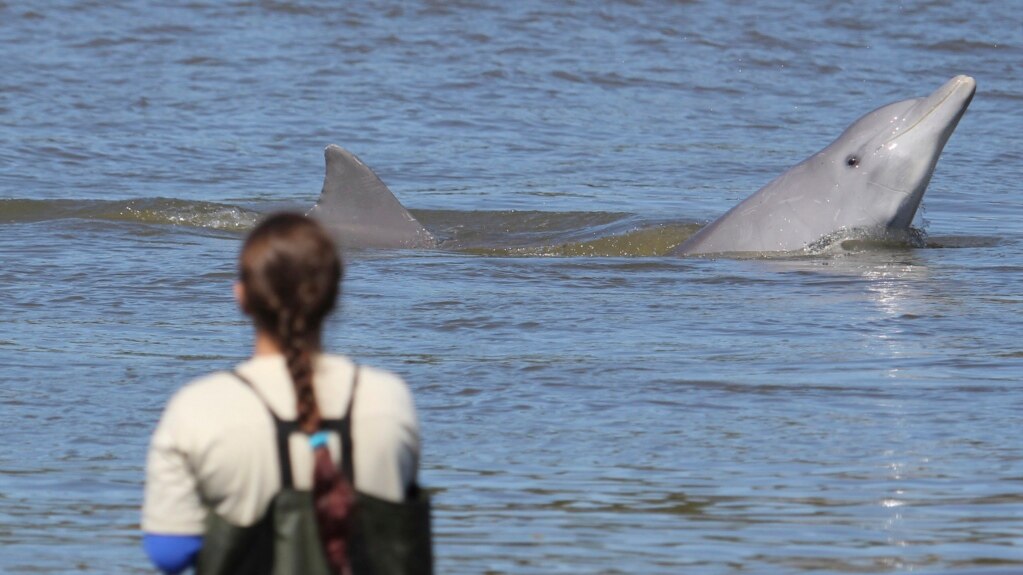A fishing community in southern Brazil has an unusual ally: wild dolphins.
Stories of people and dolphins working together to catch fish go back thousands of years.
But historians and storytellers have told the human side of the story. Until recently, it has been impossible to know how dolphins have benefited from the relationship. Now, sonar and underwater listening devices can follow them underwater and suggest an answer.
In the coastal city of Laguna, scientists have used drones, underwater sound recordings and other tools to track dolphins. The scientists can see how local people and dolphins cooperate and benefit from each other’s work. The most successful humans and dolphins are skilled at reading each other's body language.
The research was published Monday in the journal Proceedings of the National Academy of Sciences.
The Laguna residents work with wild bottlenose dolphins to catch schools, or groups, of silver fish called mullet. It is an alliance that has been recorded in local newspaper records going back 150 years.
“This study clearly shows that both dolphins and humans are paying attention to each other’s behavior, and that dolphins provide a cue to when the nets should be cast,” said Stephanie King. She is a biologist who studies dolphin communication at the University of Bristol in Britain and was not involved in the research.
“By working with the dolphins," the people catch more fish, "and the dolphins are more successful in foraging, too,” King added.
When it comes to fishing, dolphins and humans have different abilities.
Mauricio Cantor is an Oregon State University marine biologist and co-writer of the study. In Laguna, the water is cloudy, so people are unable to see the fish, he said. But the dolphins use sounds to find them. As the dolphins herd the fish toward the coast, the people run into the water holding fish nets.
“They wait for dolphins to signal exactly where fish are – the most common signal is what locals call ‘a jump,’ or a sudden deep dive,” Cantor said.
The researchers used sonar and underwater listening devices, or microphones, to track the positions of the dolphins and fish. Drones recorded the action from above, and GPS devices attached to residents’ wrists recorded when they casted their nets.
The more closely the people timed casting their net to the dolphins’ signals, the more likely they were to catch a large amount of fish.
How do dolphins benefit?
When the nets fall in the water, it scares the fish. They then break into smaller schools that are easier for dolphins to hunt. Cantor said the dolphins sometimes also take one or two fish from the net.
The Laguna residents group the individual dolphins as “good,” “bad,” or “lazy.” The grouping is based on their skill in hunting and likelihood of cooperating with humans, said Cantor. The people get most excited when they see a “good” dolphin approaching shore.
It is not clear how the Laguna cooperation first started. But it has survived many human and dolphin generations. The knowledge is passed down by experienced fishers and dolphins to the next generation of both.
Still, the researchers in Brazil worry that the Laguna alliance may be in danger. Pollution threatens the dolphins and there are fewer local fisheries.
Scientists hope that more attention to the unusual cooperation can help drive support to protect it.
I’m Dan Novak.
Dan Novak adapted this story for VOA Learning English based on reporting by The Associated Press.

